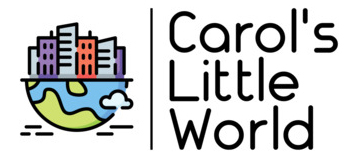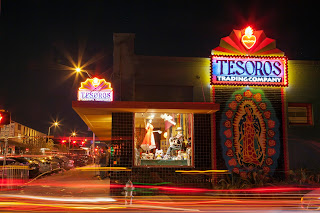Caught up with a friend and went out shooting along South Congress the other night. Was a great shoot, a most excellent evening under the stars, but I was reminded how it’s been a while since I’ve offered up any tips, hints, or tricks that I use in night shooting. I used to think that most people are better at night shooting than I am. Perhaps they are. But, lately anyway, it seems like I’ve been asked a lot for tips, ticks, and hints at how to do it better. So, I thought I might collect a few and post them here. (Please forgive me if these are too obvious and feel free to post any questions you might have if they aren’t.)
For starters…gearing up. It helps if you have a sturdy tripod. Now, it doesn’t have to be an expensive one, just one that doesn’t fall over too easily. If it’s not too windy out and your rig is not too heavy, you can usually get by with a cheaper one, like those available at most electronic stores. If you want to go all out, I highly recommend Gitzo tripods. They are quite good and worth the price of admission.
Tripod aside, you will need your camera, of course, and pack extra batteries, as night shooting can wear out batteries more quickly than daytime shooting. I tend to favor shorter prime lenses for night shooting. This is because there are (usually) fewer lens elements in a shorter prime (think a 50mm 1.4 here) than in a wide ranging zoom lens. This cuts down on reflections and noise at night. It’s also a lot easier to focus a shorter lens as shorter lenses tend to be brighter which is helpful for night shooting. That said, use what you’ve got, as you can usually make it work.
If you want to shoot light trails, I usually expose for the scene and just let the trails blast out. Light against a dark backdrop is going to blast out anyway, you might as well not try to expose for it. You can also opt for spot metering on a bright part of the scene. I try to shoot at f16 as much as possible but don’t like to switch to bulb in the city so I will find myself frequently switching to shutter priority and just going with the aperture that a 30 second exposure gets me. Again, whatever works here. I’m not above shooting in all manual mode at night either, being a big fan of whatever works, given the situation I’m in at the time.
Next up, the big question. To bump ISO or not to bump ISO? I’m old school here so I prefer not to bump whenever possible. Having said that, you can get a lot out of newer cameras these days. The ISO wars have not been lost of me. Even bumping up to 400 or so can buy you a lot of wiggle room at night. Just remember to set it back after your night shoot, before you tuck the camera away, as it’s easy to forget to do this and you don’t want your daytime shots ruined with a 1600 ISO setting (or some such thing.)
There’s my favorite topic of light painting. You can do this in a multitude of ways. Some of my favorites? Meter the scene and move the camera about half way through. For example, suppose I take a reading of, say, 20 seconds at f16 at ISO 100. Fire away the shot, with camera on tripod, and, as I fire, start counting (in your head or aloud if you must) 1 Mississippi, 2 Mississippi, etc. until you get to 10 seconds or so (about half way in.) At this point, pick the tripod up and dance it around. Move the camera on the tripod for the remainder of the 20 seconds, until the shutter clicks again. This technique can give you some fun results. Of course, paint with flash is another option, and I’ve been known to have some fun with some colored flashlights too. You can also open the zoom if you didn’t follow my advice about the prime lenses. Whatever works.
If you haven’t got a tripod, don’t let that stop you from shooting the night. Learn to pan and paint with your camera in hand. There is also flash combined with long exposure (think rear curtain sync here) and a few other tricks you can try. Don’t feel limited without the three legged beast, rather learn to enjoy the extended periods of time with the shutter open no matter how you have to work them.
Experimentation and play is a lot of it for me. One of the reasons I love night photography so much is that things look so different and we can really try new things and play around a lot without feeling hurried. I love that. I hate chasing sunsets and hustling to get the right light. Shooting at night allows me to putter about and let the light accumulate on me. I love mixing it up like that.
One last final pointer. Cities, stars, things we shoot at night all have rhythms to themselves. Learn to watch for the timing of the stop lights to guess when a car might come by to give you a light trail. Learn which way the moon is moving in the sky. Watch as crowds of people walk, which way are they usually going? Photography is as much about anticipation as it is about being there when it happens.
I hope you enjoy night shooting as much as I do. It really is a fun different world after the sun goes down on us all.
Until next time…
This one taken at Tesoros Trading Company, South Congress, with a walkabout zoom lens and the baby Mark.

